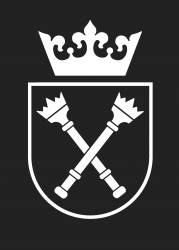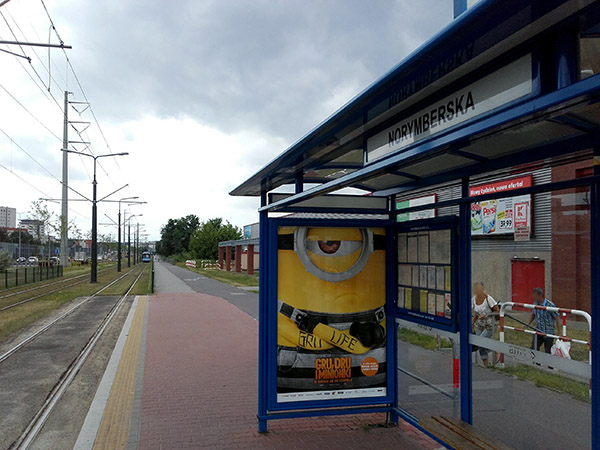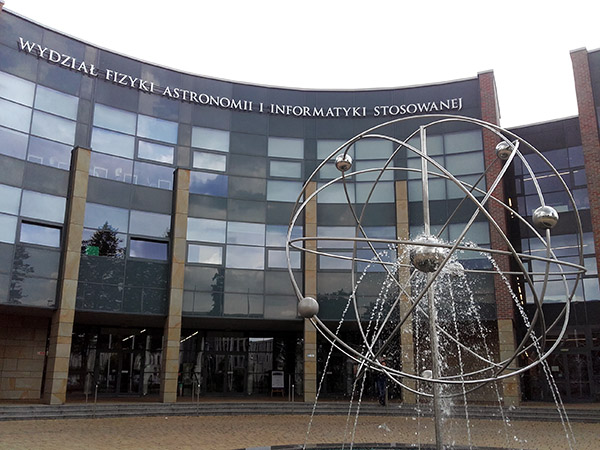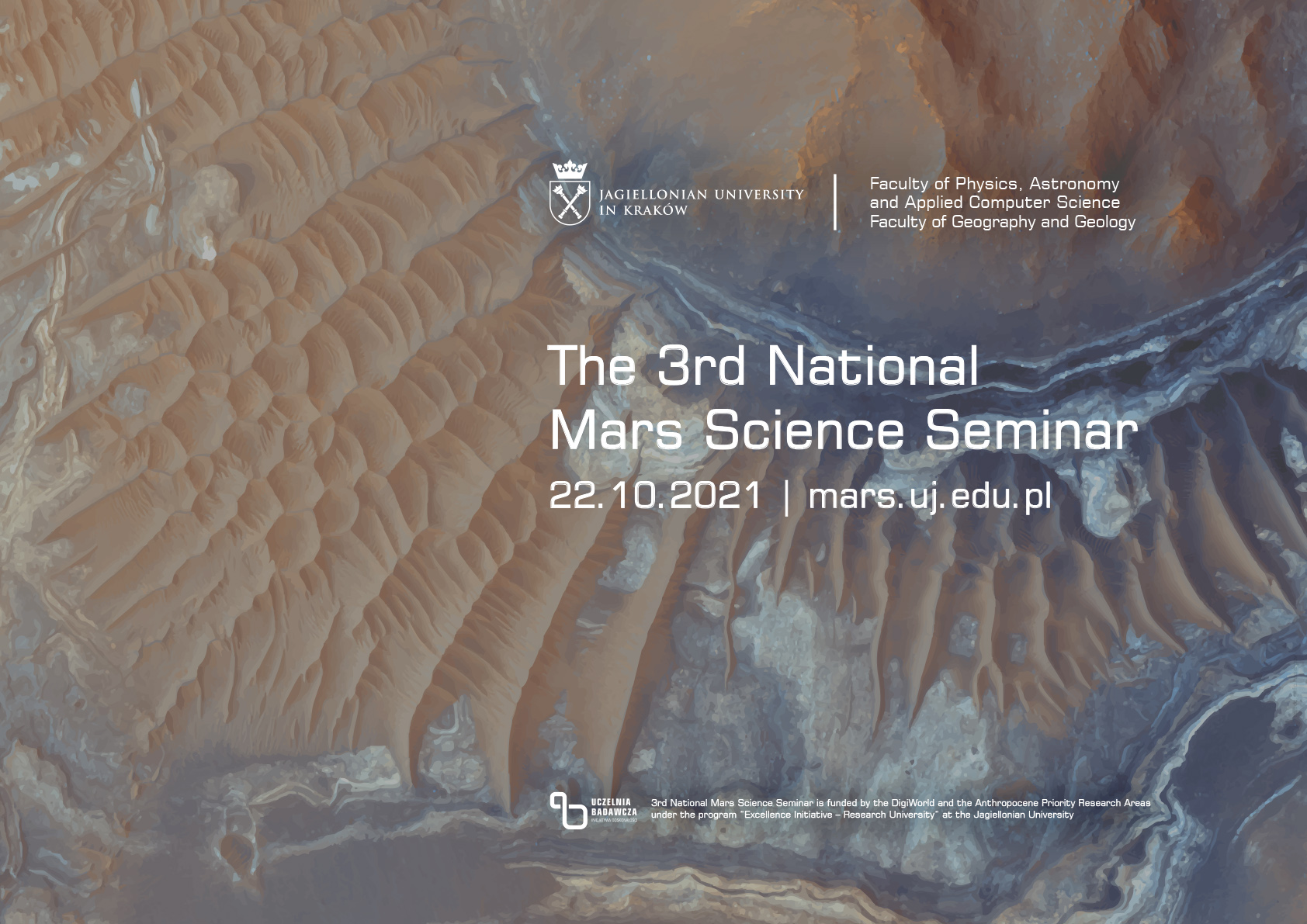
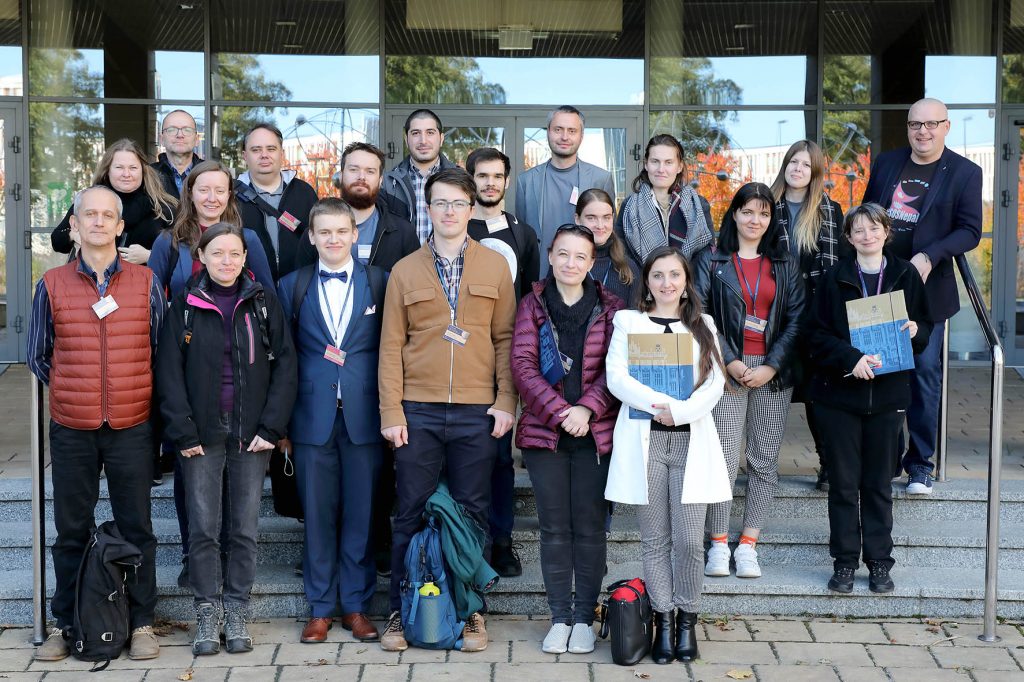
Aim of the seminar
- To present achievements of Polish scientists in the field of Mars science
- To establish scientific cooperation in the field of Mars science
- To develop Mars science in Poland
Scope
Topics of interest for submission include, but are not limited to:
- estimation of Mars orbital parameters and global properties of the planet
- nearest cosmic neighborhood of Mars
- study of Mars planetary spheres: magnetospheres, ionospheres, atmosphere, lithosphere, hydrosphere, and the interior of the planet
including research results based on:
- data from current and past Mars missions
- new research methods and tools for future Mars exploration
- theoretical modeling and numerical simulations in Mars studies
- laboratory simulations and studies of Mars analogs
Program:
9:30-10:00 Registration (Main Hall)
10:00-12:15 Oral Session (Room A-1-06)
10:00-10:15 Opening of the Third National Mars Science Seminar
10:15-10:30 Joanna Gurgurewicz (Space Research Centre PAS): Megashears at the crustal dichotomy in Valles Marineris and implications for metalliferous mineralizations
10:30-10:45 Daniel Mège(Space Research Centre PAS): The proto-Valles Marineris history illuminated by the interacting Martian dynamo and crustal dichotomy
10:45-11:00 Joanna Kozakiewicz (Jagiellonian University in Kraków): Coarse-grained ripples in Meridiani Planum
11:00-11:15 Pierre-Antoine Tesson (Space Research Centre PAS): Volcanic airfall deposits in Noctis Labyrinthus
11:15-11:30 Anna Łosiak (Insitute of Geological Sciences PAS): Teaching planetary geology to engineers during European Rover Challenge competition
11:30-11:45 Paweł Rzońca (AGH University of Science and Technology): Modeling of propagation of EM ELF waves on the surface of Mars using FDTD method in the context of ground tomography
11:45-12:00 Piotr Koperski (SGPR.TECH and AGH University of Science and Technology): Some new results from observations of the electromagnetic ELF range phenomena registered on sand dune
12:00-12:15 Magdalena Pilarska-Mazurek (Warsaw University of Technology): Multi-source classification of Meridiani Planum landforms using deep learning for analysis of HIRISE and Opportunity imagery
12:15-12:30 Break
12:30-13:15 Poster Session (II floor corridor at room A-1-06)
Sam Poppe (Space Research Centre PAS): DeMo-Planet: a new project to simulate shallow magma emplacement in the fractured crust of terrestrial planetary bodies
Magdalena Baranowska (Adam Mickiewicz University in Poznań): Mapping features potentially related to glacio-volcanic activity in Utopia Planitia, Mars
Ewa Borowska (University of Warsaw): Astrobiology Investigation on the New Volcanic Island Surtsey
Natalia Zalewska (Space Research Centre PAS): Terrestrial analogues of Martian cone chains on Isidis Planitia
13:15-14:00 Lunch (Bar in Main Hall)
14:15-16:15 Workshop (Room F-1-08)
16:15-16:45 Coffee Break (II floor corridor at room A-1-06)
17:00 Opening of the GO Mars project exhibition (Library)
The official language of the seminar is English.
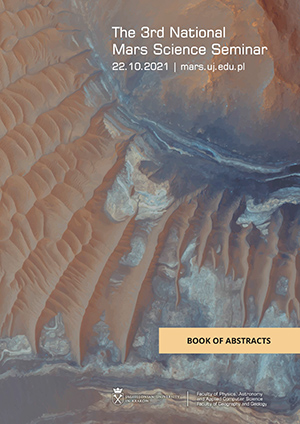
Workshop
Conducted by Magdalena Pilarska-Mazurek (Faculty of Geodesy and Cartography, Warsaw University of Technology)
In the first part of the workshop, open-source tools for Mars orbital images processing will be presented (foremost the NASA Ames Stereo Pipeline, ASP). The participants will familiarize with the tool and with steps necessary to generate products such as Digital Elevation Models (DEMs).
In the second part of the workshop, the participants will have an opportunity to visualize and analyze different Mars data (especially digital elevation models from various sources). This will allow the participants to compare different DEMs and to understand problems that can occur while using the data. The participants are welcome to prepare a computer with the QGIS/ArcGIS software to visualize the data on their own. The data will be available one week before the workshop.
The GO Mars Project Exhibition
Invitation to the exhibition
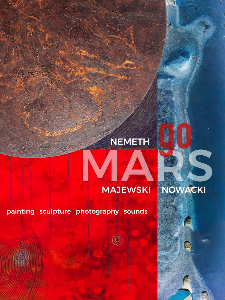
THE GO MARS PROJECT
Art and science have always been associated with each other and are closely related, despite being viewed as areas of life that are distant from each other. The inspirational role of science in modern art becomes even more obvious when we analyze the history of science and art development from the mid-nineteenth century to the present day. Representatives of both fields are characterized by a similar curiosity about the world, their willingness to ask difficult questions as well as seeking answers to them. For them, pushing and extending limits seems to be the key premise of their development, while negating the achievements of previous generations and looking for own new ways of development is something natural. This is a feature of creative people, scientists and artists alike.
When in 2015 I heard, in the course of the conversation, about the title of the dissertation by Joanna Kozakiewicz: “Investigating the Martian subsurface using the Schuman resonance parameter analysis method”, it within seconds became apparent that this was the title of the image that I wanted to paint. This has, after many years served as an input and inspiration for my work and that of my colleagues, Erika Nemeth and Wacław Nowacki, in the exhibition project “Go Mars”.
The “Go Mars” project came into being during café meetings at the end of 2019, when artist-painter Maciej Majewski and photographer Wacław Nowacki, were engaged in endless discussions looking for inspiration for a new exhibition. In 2020, the sculptor Erika Nemeth from Hungary joined the duo.
All three participants agreed to change their current points of view to find a topic that offer the opportunity to describe the times we live in, not only our expectations and fears about the future, but also the hope to develop, explore new spheres and worlds. We, thus decided to change our reference point to Mars.
Each of us has contributed his or her previous creative achievements, style, sensitivity and experience to the project. We started looking for a new leitmotif that would enable us use the best means of artistic expression. Mars has become, for each of us, a source of new inspiration so important to any creator. The resulting work of the three artists, combining painting, artistic photography, sculpture, drawing and musical compositions were dedicated to each work, forming a coherent whole. The exhibition is a projection of our ideas, feelings and emotions that accompanied us while working on it.
Maciej Majewski
LET’S CREATE A NEW WORLD!
There is no guarantee that the world we want to create in the future will be better than the one on the abandoned planet. Man, playing god, is preparing to create it, in order to create new spaces for his expanded self. He tries to justify his exploitative nature with the illusion of a new beginning.
These experiments have become necessary because of mankind’s self-absorbed acts. Searches for a place without real creation, hungry missions to satisfy the needs of a man of pampered morals.
Such an exodus to Mars, could bring change for the better in human nature? New Earth, a pure planet, not accustomed to man. Strong and hard, it does not need us. Will it exercise the grace to welcome us, or will it indifferently absorb us? It is more likely that humanity’s naive hope that Mars is waiting for us will not be fulfilled.
By creating life on a new Earth, we chase the illusion that we are useful and inherently pure. The most we can do is to stop continuing all our grave mistakes and, working with a productive spirit, perhaps become satisfactorily addicted to it.
A productive, respectful, creative spirit can be found in the souls of artists, women, children, and every single human being. The new world can be built on the foundation of their spiritual qualities. Nothing else. Only in this way can this project succeed. To seek a livable planet, to survive. But there is no second chance. It is not possible to repeat the mistakes, what we use to in life on Earth, here they behave differently, otherwise led to unforeseeable consequences.
To grasp the only chance, and the right one, it could ensure the survival for humanity. But survival will not be enough, the resulting construct must be evolvable. Because they have no other chance, either on Earth or on Mars. Man must arrange himself ethically not only in his external universe but also in his internal universe. The well-functioning strategy will not be the living up everything, but the integration into the eternal system, subordination.
Humanity may be able to enrich the world, or even more worlds, but it must completely relearn how to do so. It has misjudged the purpose of enrichment, has not applied it prudently, has immorally defined its meaning.
What can three artists, who have thought together on this question do about it?
They can try to build on each other’s ideas, to fit into each other’s universe, and thus create a single common ground. Which was liberatingly inspiring work. Real progress, a release of anxiety, for all of them.
Majewski showed us what the right structure could be to build a whole new world, Nowacki showed us how delicate, secret and beautiful the path to it can be. And I have shown what that world will be like if it is not built on the right structure and if we do not start on the right path towards it.
Erica Nemeth
The GO MARS Project exhibition can be visited until the end of October from 9:00 a.m. to 6:00 p.m in the Library of the Faculty of Physics, Astronomy, and Applied Computer Science, 11 Łojasiewicza St., Kraków.
Organizers
The Faculty of Physics, Astronomy and Applied Computer Science
The Faculty of Geography and Geology
Honorary Committee
Prof. dr hab. Ewa Gudowska-Nowak the Dean of the Faculty of Physics, Astronomy and Applied Computer Science
Prof. dr hab. Marek Drewnik the Dean of the Faculty of Geography and Geology
Scientific Committee
- Prof. dr hab. Daniel Mège (Space Research Center, PAS)
- Prof. dr hab. Kazimierz Krzemień (Faculty of Geography and Geology, Jagiellonian University)
- Prof. dr hab. Robert Olszewski (Faculty of Geodesy and Cartography, Warsaw University of Technology)
- Dr Joanna Gurgurewicz (Space Research Center, PAS)
- Dr Joanna Kozakiewicz (Faculty of Physics, Astronomy and Applied Computer Science, Jagiellonian University)
Go Mars Project – Antypody Team
- Maciej Majewski (painting)
- Erica Nemeth (sculpture)
- Wacław Nowacki (photography and sound)
Organizing Committee
- Dr Joanna Kozakiewicz (Faculty of Physics, Astronomy and Applied Computer Science, Jagiellonian University)
- Dr Maciej Kania (Faculty of Geography and Geology, Jagiellonian University)
- Mgr Nikodem Frodyma (Faculty of Physics, Astronomy and Applied Computer Science, Jagiellonian University)
- Mgr Mateusz Sobucki (Faculty of Geography and Geology, Jagiellonian University)
If you have any questions, please contact us via: mars@netmail.if.uj.edu.pl.

3rd National Mars Science Seminar is funded by the DigiWorld and the Anthropocene Priority Research Areas under the program “Excellence Initiative – Research University” at the Jagiellonian University
How to get to the Seminar location
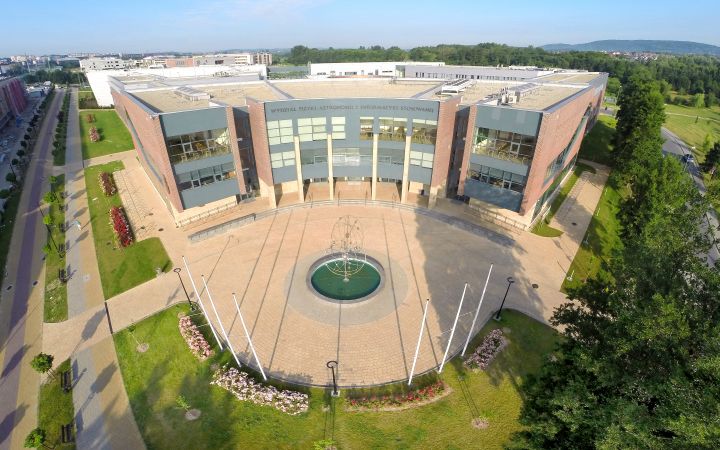
You can get to the Jagiellonian University Campus from the Main Railway Station by tram number 52 in the direction of Czerwone Maki P + R. Line 52 runs approximately every 5 minutes. Journey time approx. 30 minutes. Get off at Norymberska or Ruczaj stop. The campus map with marked buildings is below. The building of the Faculty of Physics, Astronomy and Applied Computer Science (WFAIS) of the Jagiellonian University is marked in orange. Other university buildings in blue. The red arrow marks the main entrance to the WFAIS building. The nearest tram stops are marked with blue squares. It is approx. 500 m from the Norymberska stop to the main entrance to WFAIS, and 400 m from the Ruczaj stop.
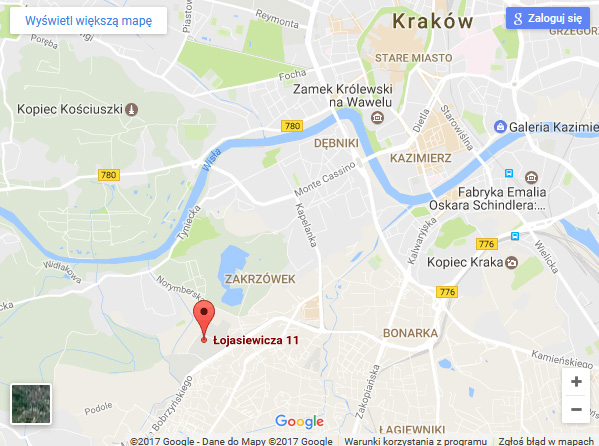
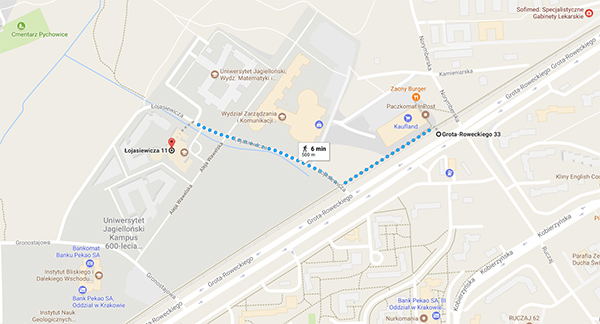
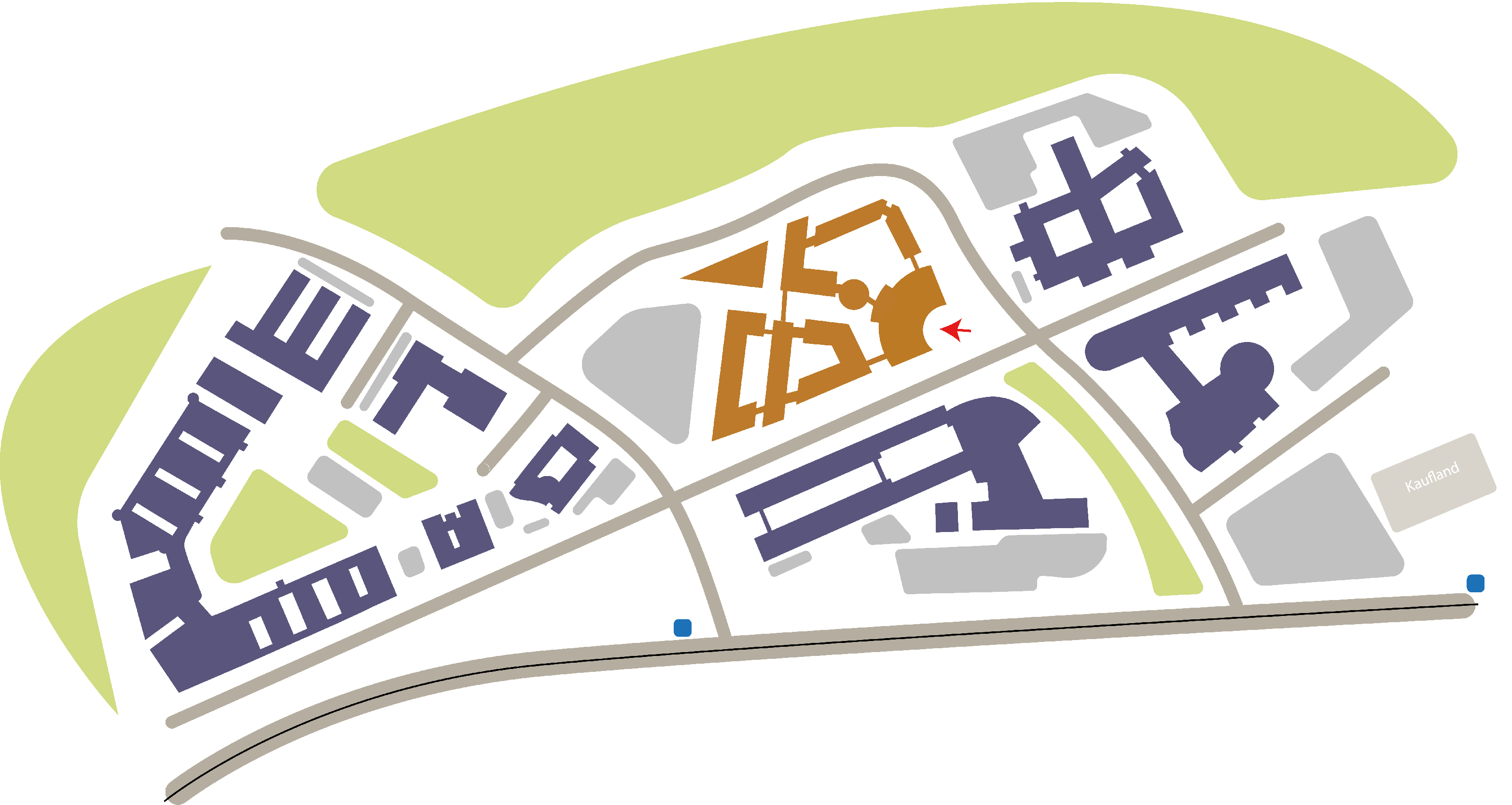
Contact
Faculty of Physics, Astronomy and Applied Computer Science
Jagiellonian University in Kraków
ul. Łojasiewicza 11, 30-348 Kraków
e-mail: mars@netmail.if.uj.edu.pl

